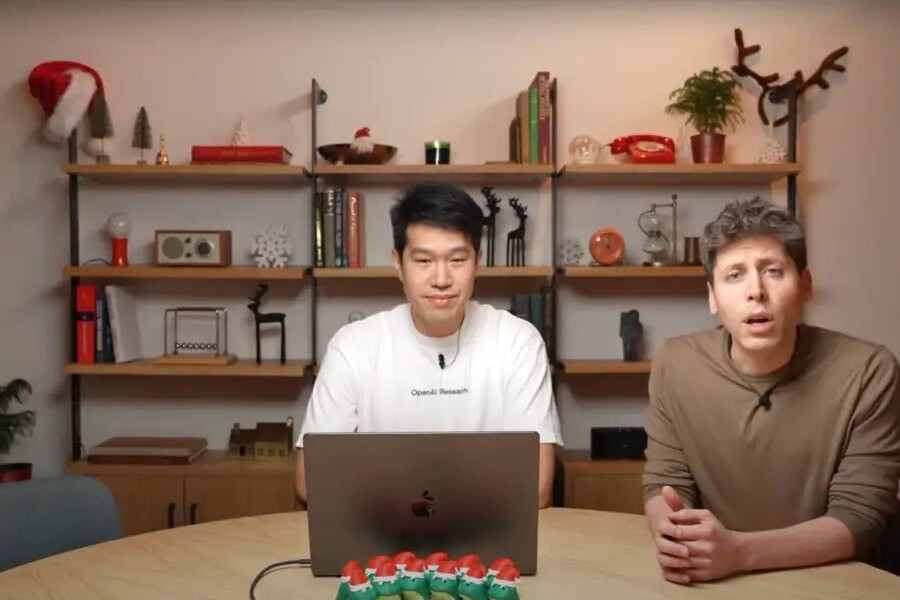In a candid Ask Me Anything (AMA) session on Reddit, OpenAI CEO Sam Altman acknowledged that the company’s once-dominant position in the AI space is under pressure. DeepSeek, a Chinese AI firm, has introduced its R1 reasoning model, posing a serious challenge to OpenAI’s lead. Altman admitted that while OpenAI remains committed to innovation, its competitive advantage is diminishing.
Altman expressed regret about OpenAI’s approach to open-source development. “I think we have been on the wrong side of history here and need to figure out a different open-source strategy,” he said. However, he noted that not all team members share this view, and addressing it is not OpenAI’s top priority at the moment.
TechCrunch highlighted that OpenAI initially embraced an open-source model but shifted towards a proprietary approach as its generative AI technology gained traction and profitability. Critics argue that this pivot has allowed competitors like DeepSeek to gain an edge by prioritizing transparency and accessibility.
Altman acknowledged the strengths of DeepSeek’s R1 model, stating, “It’s a very good model. We will produce better models, but we will maintain less of a lead than we did in previous years.” DeepSeek’s model allows users to observe its decision-making process, a feature that OpenAI is now considering for its upcoming models.
Chief Product Officer Kevin Weil suggested that OpenAI might release older models as open-source in the future. “We’ll think about doing more of this,” he said, though no timeline or specifics were provided.
As OpenAI evaluates its next steps, it recently launched the o3-mini model and teased further updates to its reasoning models. The company hinted at plans to roll out its next o3 model within a few months, though there is no official timeline for GPT-5’s release.
Altman and Weil also addressed product updates, including potential improvements to the DALL-E 3 image generator, which has not received major updates in two years. Speculation about a price increase for ChatGPT was also discussed. Altman expressed a desire to lower prices over time. Currently, the Pro tier costs $200 per month, while the Plus tier is priced at $20 per month.
The AMA also covered OpenAI’s collaboration with the U.S. government, particularly the Stargate data center project. Weil addressed concerns about the potential misuse of AI for military applications, particularly nuclear weapons. He assured users that researchers involved in such projects adhere to strict ethical guidelines. “I trust our teams to not YOLO some model output into a nuclear calculation,” Weil joked, though the message carried a serious undertone.
DeepSeek’s rapid ascent has sent shockwaves through the AI industry. Its R1 model competes directly with those from OpenAI and Meta, offering comparable performance at lower operational costs. DeepSeek’s decision to make its model free for users and open-source for developers has further increased its appeal.
There are also allegations that DeepSeek may have used a controversial technique known as distillation to extract data from OpenAI models. Although OpenAI has not confirmed these claims, industry experts suggest the damage may already be done. Even former President Donald Trump commented on the situation, calling it a “wakeup call” for the U.S. tech sector.
Microsoft, one of OpenAI’s largest investors, has reportedly expanded its support for DeepSeek by integrating its models into Azure cloud services and GitHub. This move aligns with Microsoft’s broader goal of democratizing AI tools, particularly for its Copilot+ PCs.
Despite these challenges, OpenAI is determined to stay competitive. Altman emphasized that innovation and collaboration will be key to the company’s future success. While OpenAI may no longer dominate the market, it remains a significant player in the evolving AI landscape.
The AMA session provided a rare glimpse into OpenAI’s internal strategy and leadership perspective. As the AI industry continues to advance rapidly, companies like OpenAI and DeepSeek are reshaping the technological landscape. For users and developers, the race between these AI giants promises exciting new opportunities and innovations in artificial intelligence.


